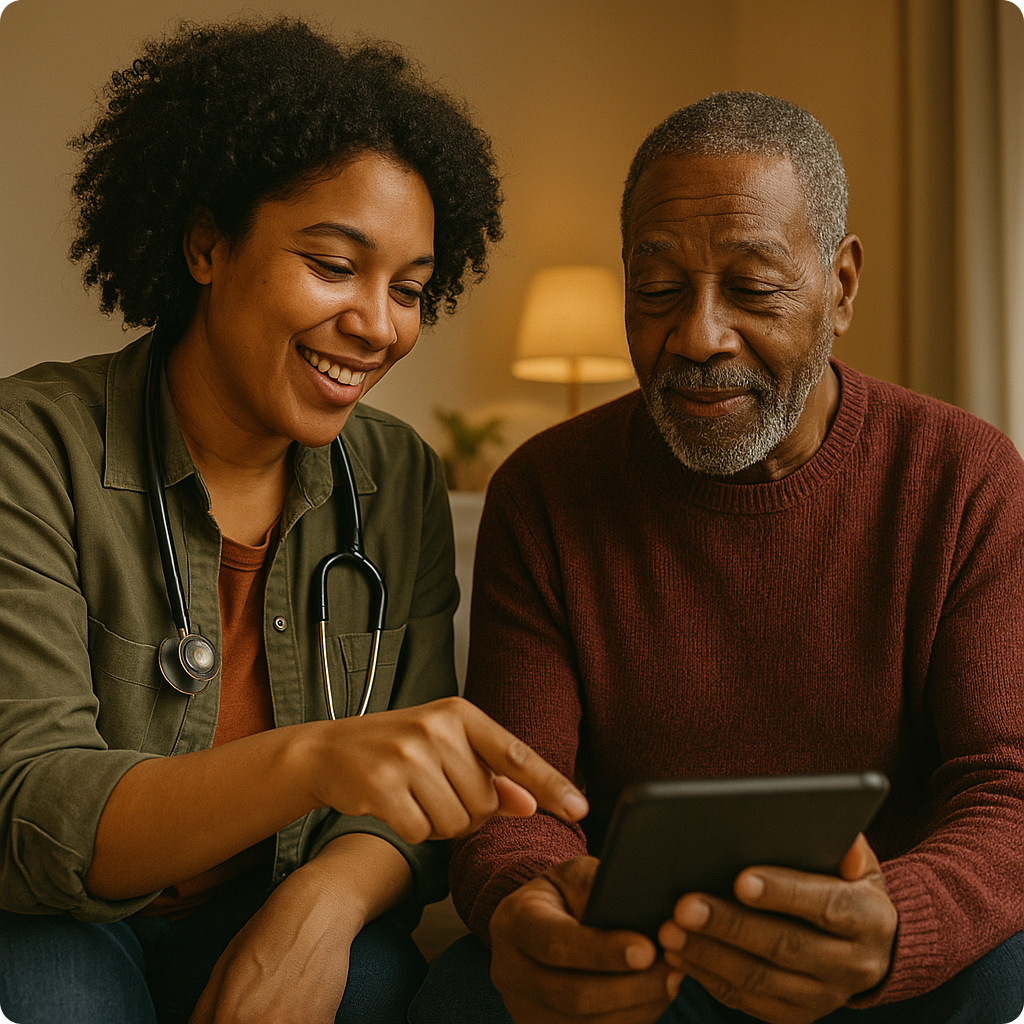Meet the New MVP of Healthcare: The Digital Health Navigator

Here’s the real question:
What good is digital health if your community can’t access it, understand it, or trust it?
That’s where Digital Health Navigators (DHNs) step in—not as tech support, but as bridges between innovation and equity.
What is a Digital Health Navigator, Really?
Think of a DHN like the person at the barbershop who helps your auntie reset her iPhone and makes sure she gets her telehealth appointment scheduled right.
They’re community-rooted guides trained to:
- Help folks access the internet and devices
- Set up and use patient portals and health apps
- Understand virtual care options and appointments
- Make sense of the digital maze that often comes with modern health care
And they do it with empathy, patience, and cultural fluency—not scripts and software updates.
What Training Do DHNs Get?
Digital Health Navigators aren’t born—they’re trained. The best programs teach:
- Digital literacy skills (how to use tech tools, apps, internet safely)
- Telehealth basics (scheduling, app downloads, video visits)
- Health literacy support (breaking down medical info so it makes sense)
- Cultural competency (meeting people where they are, not where systems think they should be)
They come from libraries, clinics, community orgs—sometimes even as part of your care team. Think: community health workers leveled up with tech skills.
Why It Matters: The Health Impact Is Real
Let’s get to the point:
Digital health is only as powerful as people’s ability to use it.
Without DHNs, we see:
- Missed appointments
- Unmanaged chronic conditions
- Worsening health disparities in Black, Brown, immigrant, and rural communities
DHNs flip that script by turning digital access into real-world health outcomes.
Real People. Real Results.
Case 1: Carlos & High Blood Pressure
Carlos learns he has high blood pressure and is told to monitor it with an app. A community health fellow steps in to:
- Help him download the app
- Show him how to use it
- Follow up two weeks later to make sure he’s good
Result: Carlos stays on track, reports his numbers, and avoids a trip to the ER.
Case 2: Alicia & Postpartum Depression
Alicia is dealing with postpartum depression. Her doc recommends virtual therapy. A DHN:
- Helps her schedule an appointment during nap time
- Walks her through the platform at her house
- Checks in two weeks later
Result: Alicia gets care, support, and a therapist she connects with—all without leaving home.
These aren't hypotheticals. They're what’s possible when care meets community.
Where Do We Go From Here?
Let’s be real—DHNs are still underfunded, underrecognized, and underused. But they’re the future.
Here’s what we need:
- More training programs, especially those focused on telehealth
- Sustainable funding to make DHNs a standard part of health care teams
- Policy shifts that embed digital navigation in Medicaid, FQHCs, and public health departments
Tech is only transformative when it's equitable. DHNs make that happen.
You can’t build health equity without tech equity.
And you can’t do either without people like DHNs leading the way.
Let’s talk about it.
